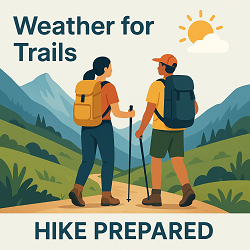Pecos, TX Weather Forecast and Current Conditions (79772)
Current Conditions From Nearby Local Station

Feels Like 94°F
at
Current Conditions From Nearby Local Station

Feels Like 94°F
at
Point Forecast at a Glance







This Date in Weather History
1981 - Severe thunderstorms raked Phoenix, AZ, with heavy rain, high winds, and hail up to an inch and a half in diameter, for the second day in a row. Thunderstorms on the 1st deluged Phoenix with .68 inch of rain in five minutes, equalling their all-time record.
More on this and other weather history
Pecos 7 Day Weather Forecast Details
Thursday Oct 2

Day: Sunny, with a high near 94. East wind around 10 mph.

Night: Mostly clear. Low around 60, with temperatures rising to around 64 overnight. Southeast wind 0 to 10 mph.
Friday Oct 3

Day: Sunny, with a high near 92. East wind 0 to 10 mph.

Night: Mostly clear, with a low around 60. Southeast wind 5 to 10 mph.
Saturday Oct 4

Day: Sunny, with a high near 93. Southeast wind 5 to 10 mph.

Night: Mostly clear, with a low around 64.
Sunday Oct 5

Day: Sunny, with a high near 95.

Night: Mostly clear, with a low around 64.
Monday Oct 6

Day: Sunny, with a high near 91.

Night: Mostly clear, with a low around 63.
Tuesday Oct 7

Day: Sunny, with a high near 91.

Night: Partly cloudy, with a low around 63.
Wednesday Oct 8

Day: Mostly sunny, with a high near 86.

Night: Partly cloudy, with a low around 60.
Sun & Moon Monthly
Sunrise 7:49 AM
Sunset 7:39 PM
Last Light 8:03 PM
Moonset 2:55 AM

Contiguous United States Extremes
Wed's High Temperature
101 at Rio Grande Village, TX
Thu's Low Temperature
23 at Angel Fire, NM and Saranac Lake, NY
Weather Folklore
Burning wood pops more before rain and snow.
Current subscribers - login to your ClearSky account
About Pecos, Texas
Pecos ( PAY-kəs) is the largest city in and the county seat of Reeves County, Texas, United States. It is in the valley on the west bank of the Pecos River at the eastern edge of the Chihuahuan Desert, in the Trans-Pecos region of West Texas and just south of New Mexico's border. Its population was 12,916 at the 2020 census. On January 24, 2012, Pecos City appeared on the Forbes 400 as the second-fastest growing small town in the United States. The city is a regional commercial center for ranching, oil and gas production, and agriculture. The city is most recognized for its association with the local cultivation of cantaloupes. Pecos claims to be the site of the world's first rodeo on July 4, 1883.
Content from Wikipedia, licensed under CC BY-SA 3.0.
How We Provide Better Local Weather
Current conditions: We use the nearest available station to your location - including professional MESONET/MADIS and local weather stations - often miles closer than regional airports.
Forecasts: National Weather Service point forecasts predict for your specific area, not broad regional zones, making them far more relevant to your location.

